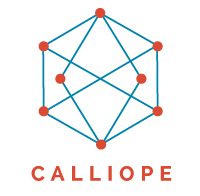My loyal readers may have been surprised (or relieved) by my hiatus from publishing. I was not idle, however. I led a study on Energy Efficiency Policy in New Jersey and Pennsylvania on behalf of the Department of Energy-funded Greater Philadelphia Innovation Cluster for Energy Efficient Buildings. I completed the work last week, and it will be released soon.
I have also been advising New Jersey Governor Chris Christie on developing the 2011 Energy Master Plan for New Jersey. The draft plan is available here. The findings of the eight-person work group on clean energy will be made public shortly, and public hearing is being held on October 21 from 9:30-12:30 at the Rutgers Eco-Complex. Details are available here.
My public sector work has given me some new insights into green building and energy efficiency policy, which will be developed in further posts over the next few months.
Among the most interesting findings is the difficulty in crafting public policy initiatives to break through the “efficiency gap”—the gap between a customer’s actual investments in energy efficiency and those that appear to be in the consumer’s best interest.
Most policy efforts are aimed at eliminating the "first cost" barrier to energy efficiency. In other words, providing grants or loans to minimize the upfront investment required for energy efficient systems.
Making these programs work to achieve scale and realize significant energy savings has proven devilishly difficult. With the influx of ARRA funds, state and local jurisdictions have invested $650 million in loan programs for energy efficiency projects, with loans generally provided to customers at low- or zero- interest rates.
The author of a May 2010 nationwide study of state, utility and municipal loan programs by the National Renewable Energy Laboratory concluded:
Despite the advantages of state, utility and municipal loan programs, participation to date has been modest, and they appear to be incapable of driving a large scale transition to a clean energy future by themselves.
A study just released in September, 2011 by the ACEEE which reviewed 24 financing programs nationwide concluded that participation rates were generally low across programs, and do not generally track energy savings. The report concluded:
While several programs have many years of experience and have issued thousands of loans, this market has yet to come to scale.
So, it is clear that transforming the energy efficiency environment will require more than providing low cost capital from government sources for at least two reasons. First, because government capital and capital deployment mechanisms are not robust enough to create scale, and second, because the barriers to energy efficiency are not merely financial. Psychological barriers, cultural barriers, resource barriers and technical barriers also play important roles. [This report nicely summarizes the various barriers to energy efficiency investment by sector.]
From my research, policymakers must focus on better stimulating private capital deployment and integrating financing with tools to address other barriers to energy efficiency. Understanding consumer motivation, providing resources to address the less concrete barriers to energy efficiency, and partnering with private capital sources to bring financing to scale should be the goals of energy efficiency policies going forward.

 Shari focuses on energy, environmental and building code policy, representing international companies, non-profits and trade associations in their policy and communications campaigns
Shari focuses on energy, environmental and building code policy, representing international companies, non-profits and trade associations in their policy and communications campaigns

